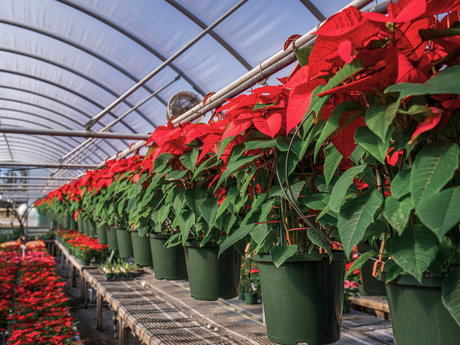There is nothing worse than your tender perennials and tropical plants freezing beyond revival. You worked so hard to get them into the ground and you want to increase their chances of survival through spring. But what do you do after a freeze? There are many ways to protect your plants; these three steps will give your plants an edge over unprotected plants and we think you’ll find them easy to accomplish. PRIOR TO FREEZE 1. MULCH- If it has been six months since you last mulched your beds, now is an imperative time to complete this task. You want to create a thick layer around the root ball to insulate them during the winter (2-6 inches depending on plant). DO NOT allow mulch to directly touch any of the stems or trunk of your plant. This could create poor air circulation and invite bacteria, fungi and damaging insects to feed on your plant. 2. WATER- Although your plants are dormant during winter months, they still require some degree of water. At least once week is a good general rule to follow except when there is a freeze warning in effect. If a freeze warning is in effect, you should plan to water in your plants at least 24-48 hours prior to freezing temperatures. This avoids desiccation and insulates soil and plant cells. 3. COVER- There are many ways to cover plants and every person may have their own success and failures when properly covering plants. NEVER USE PLASTIC sheets to protect plants. Old blankets or curtains work. You can also purchase frost clothes. Whatever you chose, you should use a structure of some sorts to prevent the blanket from touching fragile plants. This could be tomato cages, crates, string, chair, ladder, bricks, whatever works. Next, you will want to have a large enough blanket to cover the plant entirely, avoiding gaps where air can breeze through. Beach towel clips are excellent for combining sheets for larger plants. Additionally, you can bring smaller plants or bunch them together under larger bushes or trees. Have you ever noticed plants directly under large trees tend to suffer less damage during a freeze? You can observe this during the morning dew as well. AFTER A FREEZE Lastly, be sure to remove any covers off the plants so they can receive warmth and sun light during the day. If it is expected to freeze again, cover plants prior to sun down. Do not prune frost damaged leaves or twigs. It will be hard to resist; however, this is particularly important to new plants that the roots are not yet established. You may clean up annuals if another freeze is not expected in the near future. If you are unsure what to do, you can always give us a call and ask about your particular plant. -Vanneza Rivera Landscape Horticulturist
You next read
View all-

Give the Gift of Nature: Holiday Gift Ideas from Liberty
Looking for meaningful holiday gifts that feel personal and lasting? Nature-inspired presents offer beauty, purpose, and year-round enjoyment. From festive plants and pottery to outdoor accents and living gifts that...
Veda Broderick |
-

Honoring a Jacksonville Holiday Tradition: From Trad’s Christmas Magic to Liberty’s North Pole Nursery
For generations, Christmas in Jacksonville has carried the signature scent of fresh Fraser Fir drifting out of 8178 San Jose Boulevard. Long before Liberty Landscape Supply moved in, this address...
Veda Broderick |
-

Welcome to the North Pole Nursery: A New Holiday Tradition at Liberty Landscape Supply
If you’ve driven down San Jose Boulevard lately, you may have noticed something a little extra merry happening at Liberty Landscape Supply. Twinkling lights. Rows of Fraser Firs. A suspicious...
Veda Broderick |
-

Fall Planting Guide: Best 3-Gallon Plants for Florida Gardens
Fall planting in Florida is all about setting your landscape up for success. Cooler weather, longer nights, and the right 3 gallon plants can transform your yard with instant color...
Veda Broderick |
-

How to Replant Poinsettias After the Holidays
Keep your poinsettias thriving long after the holidays with these simple steps for replanting, pruning, and encouraging rebloom. Learn how to transition your poinsettia from festive décor to a year-round...
Veda Broderick |
-

Why Fraser Firs Are the Best Christmas Trees for Florida Homes
Discover why Fraser firs are the gold standard for Christmas trees in Florida. From soft needles and strong branches to iconic holiday fragrance, learn tips for selecting, caring for, and...
Veda Broderick |
-

How to Make Your Live Wreath Last the Entire Season
Keep your fresh Christmas wreath looking beautiful all season long — even in Florida’s warm weather. Discover simple care tips for keeping your wreath lush, fragrant, and festive through heat,...
Veda Broderick |
-

8 Tips for Holiday Prepping Your Home
The holidays always seem to sneak up. One moment it is pumpkins, and the next it is party invites, guests, and gift lists. A little planning now can make all...
Veda Broderick |








